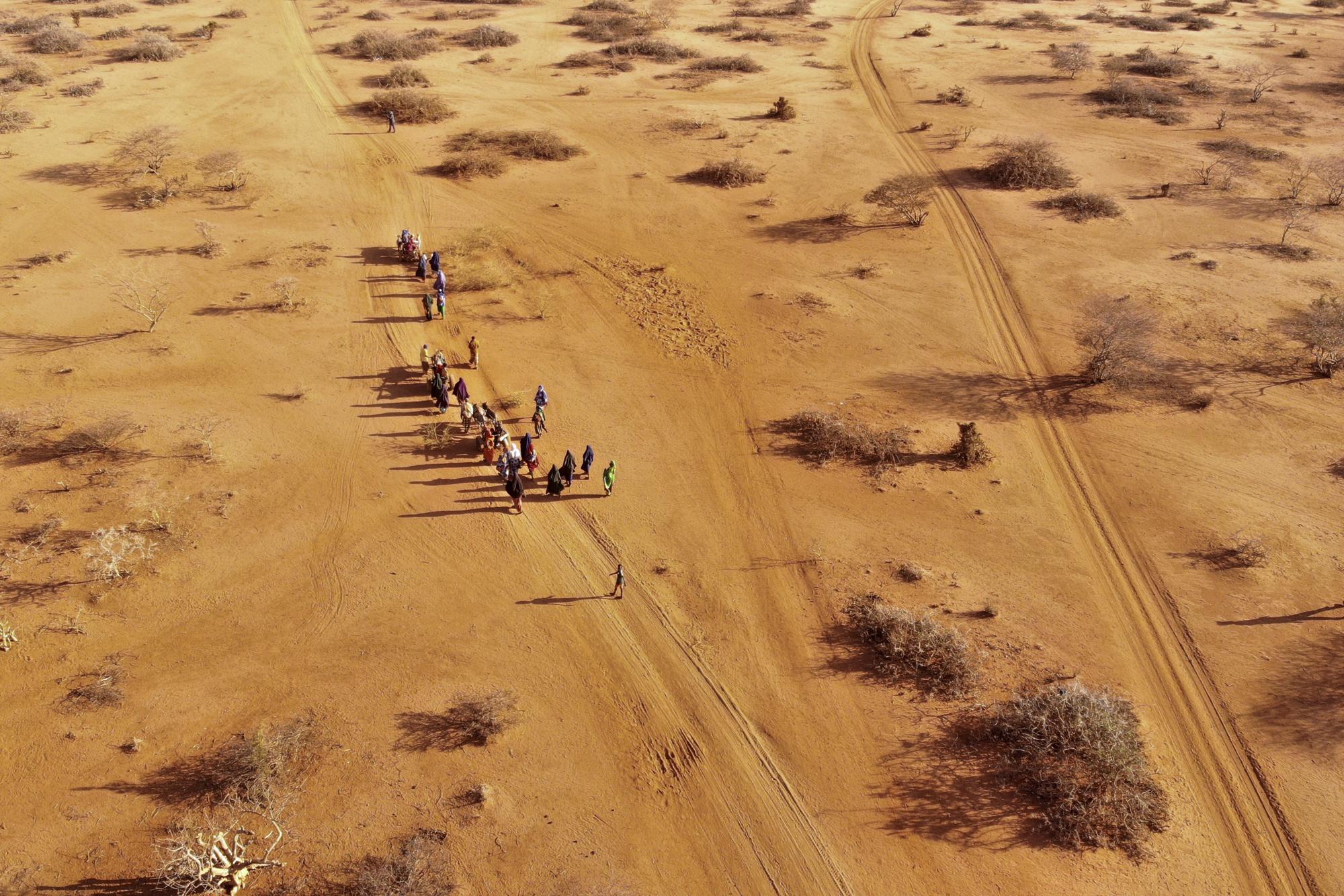New York (Caasimada Online) – Food security experts have declared the situation in Somalia “extremely critical” for more than 6 million people who remain hungry amidst a historic drought.
The UN and partner organizations released the latest assessment, which revealed “very high mortality rates” in the worst-affected populations.
The quarter-million people are located in Somalia’s capital, Mogadishu, and the southwestern city of Baidoa. Officials have yet to provide further details regarding the report’s revelations.
Although the report no longer projects famine for the worst-hit population between April and June, the assessment only slightly eases warnings of acute food insecurity. The Horn of Africa could face its sixth failed rainy season in a row.
Some humanitarian and climate officials warn that trends are worse than the 2011 famine that killed a quarter-million people in Somalia.
Crisis in Somalia further compounded
Millions of livestock have died in the current crisis, compounded by climate change and insecurity.
Somalia is battling thousands of fighters with al-Qaida’s East Africa affiliate, al-Shabab. The UN migration agency reports a record high of 3.8 million people displaced.
According to the latest food security assessment, nearly half-a-million children in Somalia are at risk of being severely malnourished this year.
The review released in December predicted famine for people displaced to Mogadishu and Baidoa, along with rural communities in the Baidoa and Burhakaba districts.

Slight alleviation of food insecurity in Somalia
However, the new assessment provides a slightly better outlook, suggesting that more humanitarian aid and improved forecasts for the rainy season could alleviate food insecurity and acute malnutrition conditions, including better access to water.
Nonetheless, the assessment warns that the situation still depends on the rainfall and whether aid can reach the most vulnerable populations.
Understanding famine and its consequences
Famine refers to an extreme lack of food, a significant death rate resulting from outright starvation or malnutrition, and diseases like cholera.
A formal declaration of famine is made when data shows that more than a fifth of households experience extreme food gaps, more than 30% of children are acutely malnourished, and over two people out of 10,000 die daily.
Despite the report’s slight optimism, the situation in Somalia remains dire. As such, urgent intervention and support are necessary to prevent a devastating outcome.
The UN and humanitarian organizations are providing aid. However, they must receive enough support to reach the most vulnerable populations in Somalia.


